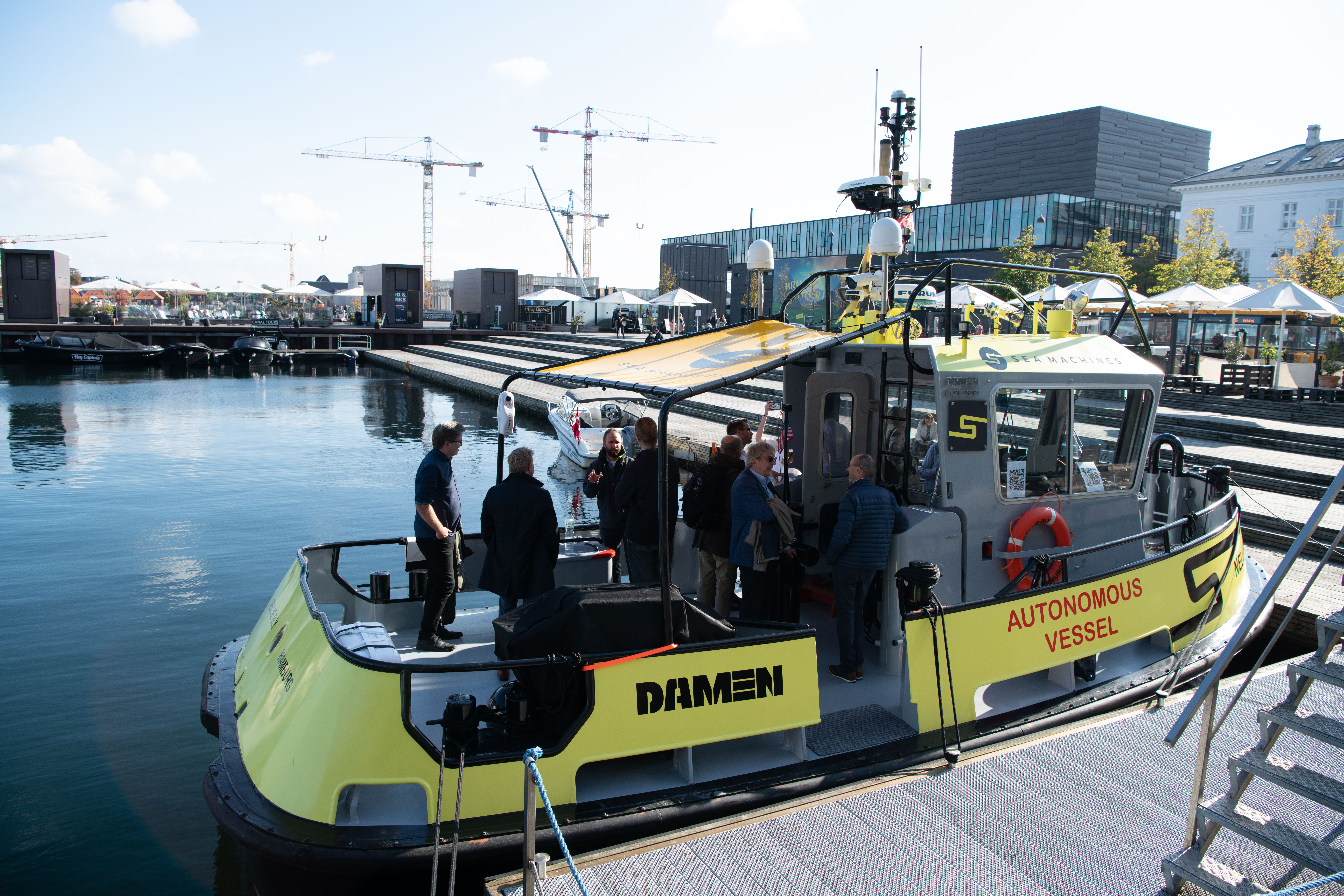
The first fully autonomous voyage of over 1,000 nautical miles has been successfully completed. At the end of October, the ‘tugboat’ that demonstrated the new technology safely docked in Hamburg after a thirteen-day trip around Denmark.
“The tugboat was not remotely controlled, but in fact it sailed independently,” says Peter Holm, the head of the European branch of the company Sea Machines. Sea Machines Robotics is a developer of autonomous navigation and control systems. “That, as far as I know, has never been accomplished before.”

Machine Odyssee
The Machine Odyssey – as this baptism of fire was christened – departed from Hamburg at the end of September. At the helm was the so-called ‘Sea Machines SM300 autonomy system‘. The SM300 is an autonomous system ‘from sensor to propeller’. It uses advanced route planning, knows when to avoid obstacles and has access to accurate nautical chart data.
In a nutshell, the system controls the entire voyage, from the home port to the final destination. The remote captain has access to the live location and situation on the ship. This particular voyage, the Machine Odyssey, was under the command of commanders in the United States.
“Just as land-based industries outsource predictable operations to robotic systems, our autonomous technology elevates people from operator to supervisor . Most of the control rests with the technology,” Sea Machines CEO Michael Johnson said in a press statement.

Hazardous situations
Is it the intention that in the future ships will sail completely independently and without crew? “That’s not what we have in mind,” says Holm. “Our technology is meant more as a way to assist a minimal crew. For example, our system can intervene if a captain falls asleep or happens to overlook another vessel. Autonomous technology enhances safety as well as productivity and efficiency, which means fewer crew members will be needed.”
Holm: “We have a customer who carries out land surveying and clears World War II explosives from the seabed. It’s extremely dangerous work. With a system like ours, you can remove people from such a hazardous situation.” But companies and agencies with fleets of cargo ships, tugboats or ferries, for example, may also benefit from the self-sufficient technology, whereby safety and productivity levels are increased, Holm says.
Also read: New driverless delivery truck to navigate through cities
A simple boat
The tugboat in question, the Nellie Bly, is just a “simple boat,” according to Holm. Sea Machines, the designers of the technology, wants to show that you do not need an advanced craft to be able to use this innovation. Holm: “The system is easy to fit on any boat, existing or new, including vessels with, for example, a single propeller.”
Throughout the voyage, the Nellie Bly had two professional sailors on board as well as occasional guest passengers. The boat called at a number of ports along the route to demonstrate the technology.
“There is not yet any legislation or regulation in place for autonomous craft,” Holm explains. “The Danish authorities gave permission for the voyage provided that there were always personnel on board in case something unexpected happened.”
But as Holm sees it, the trip went surprisingly well. “We had a few connection problems, but other than that, it didn’t affect the autonomous system. It just did its job. Then there was the weather. Owing to adverse weather forecasts, we had to change a few routes, otherwise we would have lost more than a week’s time. But all in all, the mission was successful.”
Also read: England and France launch the world’s first autonomous mine removal program


